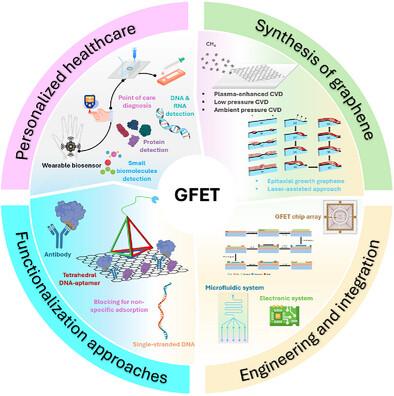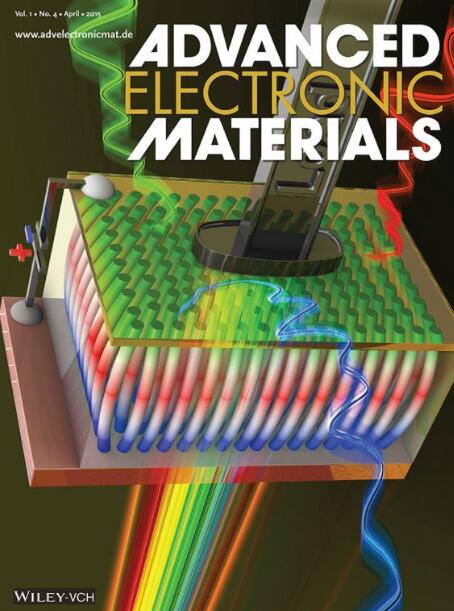Pushing Biomolecule Detection Limit With Graphene Field-effect Transistor Biosensors
IF 5.3
2区 材料科学
Q2 MATERIALS SCIENCE, MULTIDISCIPLINARY
引用次数: 0
Abstract
Ultrasensitive detection of biomarkers at trace levels is essential for early disease diagnoses, preventing further complications and treatment burdens. Advances in material science, micro/nano engineering, and biology have enabled a new generation of point-of-care biosensor devices that rival lab-based diagnostics while remaining portable for wearable or even implantable applications. Graphene, a 2D semiconductor, has gained significant attention as a sensing material due to its large surface area and exceptional electronic properties. These features support the binding of bio-recognition elements and enable signal transduction at the single-molecule level. Among various sensing platforms, graphene-based field-effect transistors (GFETs) stand out for their label-free, real-time detection and simple readout, making them ideal for wearable diagnostics. GFET biosensors hold transformative potential for personalized healthcare by detecting a broad range of biomarkers at ultra-low detection limits. This paper presents a concise overview of recent advancements in ultrasensitive GFET-based biomolecule sensing, with a focus on key factors governing the sensitivity, strategies for producing high-mobility graphene, device engineering, and emerging methods to push the limit of detection and specificity. Finally, emerging trends and future directions for GFETs in wearable diagnostic technologies is highlighted.

石墨烯场效应晶体管生物传感器推动生物分子检测极限
对痕量生物标志物的超灵敏检测对于早期疾病诊断、预防进一步的并发症和治疗负担至关重要。材料科学、微/纳米工程和生物学的进步使新一代的即时医疗生物传感器设备能够与实验室诊断相媲美,同时保持可穿戴甚至可植入应用的便携性。石墨烯是一种二维半导体,由于其巨大的表面积和优异的电子性能,作为一种传感材料受到了极大的关注。这些特征支持生物识别元件的结合,并在单分子水平上实现信号转导。在各种传感平台中,基于石墨烯的场效应晶体管(gfet)以其无标签、实时检测和简单读数而脱颖而出,使其成为可穿戴诊断的理想选择。通过在超低检测限下检测广泛的生物标志物,GFET生物传感器具有个性化医疗保健的变革潜力。本文简要概述了基于gfet的超灵敏生物分子传感技术的最新进展,重点介绍了控制灵敏度的关键因素、生产高迁移率石墨烯的策略、设备工程以及推动检测和特异性极限的新方法。最后,重点介绍了gfet在可穿戴诊断技术中的新兴趋势和未来发展方向。
本文章由计算机程序翻译,如有差异,请以英文原文为准。
求助全文
约1分钟内获得全文
求助全文
来源期刊

Advanced Electronic Materials
NANOSCIENCE & NANOTECHNOLOGYMATERIALS SCIE-MATERIALS SCIENCE, MULTIDISCIPLINARY
CiteScore
11.00
自引率
3.20%
发文量
433
期刊介绍:
Advanced Electronic Materials is an interdisciplinary forum for peer-reviewed, high-quality, high-impact research in the fields of materials science, physics, and engineering of electronic and magnetic materials. It includes research on physics and physical properties of electronic and magnetic materials, spintronics, electronics, device physics and engineering, micro- and nano-electromechanical systems, and organic electronics, in addition to fundamental research.
 求助内容:
求助内容: 应助结果提醒方式:
应助结果提醒方式:


